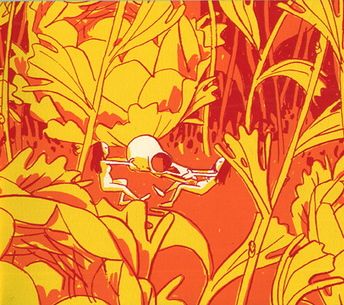
The other thing these pieces have in common: They're all by women. Pearson explains plainly that this is meant to address "deep gender inequality when it comes to the coveted real estate of exhibitions and publications". (Siglio is an independent press run by Pearson; she launched it in 2007.) Whether the work tends to be explicitly reflective of the female experience, though, is up for debate. Eleanor Antin's Domestic Peace, for which she drew graphs of conversations with her mother that indicate their subjects and corresponding levels of agitation, certainly qualifies. The concept is drolly hilarious — like something out of the The New Yorker — but the execution looks, on the page, like a sound-wave readout, as though she's made a legit scientific study of domestic survival.

All the pieces in the anthology were produced between 1940 and 2011, and Pearson has included lesser-known or previously unpublished works by important 20th-century artists, including Bernadette Mayer and Louise Bourgeois. At least one has historical importance: In 1968, Fluxus artist Alison Knowles used the Fortran programming language to produce the eerie poem "A House of Dust," which, according to the accompanying description, may be the first computer-generated poem. Its lines go like this, with only the nouns replaced, over and over: "a house of tin / among high mountains / using natural light / inhabited by people who sleep very little." Like all found poetry it sounds a bit like fortune telling, as though the text requires a divining rather than a mere reading.
Some of these women are considered writers, some visual artists, but it's probably closer to the truth to say that all of them are both. The anthology's most valuable contribution is cutting across genres to allow us to see them that way. In some cases Pearson has actually given work originally created for an exhibition space new life as a linear, on-the-page story. In the installation of Jane Hammond’s “Fallen”, thousands of leaves, each bearing the name of an American soldier who was killed in the war in Iraq, are piled up on a platform. In the book, one leaf at a time appears until the reader turns the page and finds what looks like a deep pile of leaves that covers and bleeds off the page. Unfortunately, this is probably the only piece in the anthology that, in its original inception, feels kind of obvious. Fallen leaves? It's almost corny, and it feels out of place amongst the other, truly avant-garde pieces that make this book a revelation to even the savviest students of contemporary art.







